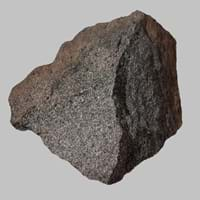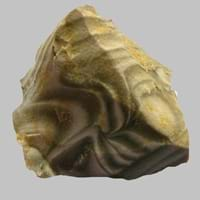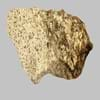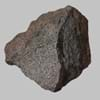Definition
Boninite is a mafic extrusive rock which is high in magnesium and silica content, formed in fore-arc environments, typically during the early stages of subduction
Flint is a hard type of sedimentary rock that produces a small piece of burning material when hit by steel
Discoverer
Unknown
Unknown
Etymology
From its occurrence in the Izu-Bonin arc south of Japan
From Old English flint - a type of rock mainly known for high hardness and for giving off sparks when struck
Class
Igneous Rocks
Sedimentary Rocks
Sub-Class
Durable Rock, Hard Rock
Durable Rock, Hard Rock
Group
Volcanic
Not Applicable
Other Categories
Fine Grained Rock, Opaque Rock
Fine Grained Rock, Opaque Rock
Texture
Aphanitic to Porphyritic
Banded, Rough
Color
Bluish - Grey, Brown, Colourless, Green, Grey
Black, Brown, Green, Grey, Red, White
Durability
Durable
Durable
Scratch Resistant
Yes
Yes
Appearance
Dull and Soft
Glassy or Pearly
Interior Uses
Decorative Aggregates, Homes, Kitchens
Decorative Aggregates, Homes, Interior Decoration
Exterior Uses
Garden Decoration, Office Buildings
As Building Stone, As Facing Stone, Garden Decoration, Office Buildings, Paving Stone
Other Architectural Uses
Not Yet Used
Curbing
Construction Industry
As a Flux in the Production of Steel and Pig Iron, As a Sintering Agent in Steel Industry to process Iron Ore, As Dimension Stone, Cement Manufacture, for Road Aggregate, Making natural cement, Manufacture of Magnesium and Dolomite Refractories
Arrowheads, Cutting Tool, Spear Points
Medical Industry
Not Yet Used
Not Yet Used
Antiquity Uses
Artifacts
Artifacts
Commercial Uses
An Oil and Gas Reservoir, Cemetery Markers, Creating Artwork, Soil Conditioner, Source of Magnesia (MgO)
Creating Artwork, Gemstone, In fire-starting tools, Manufacture of tools, Metallurgical Flux, Jewelry, To ignite fire, Used in flintlock firearms
Types
Not Available
Not Available
Features
Available in Lots of Colors and Patterns, High Mg content, Is one of the oldest rock
Clasts are smooth to touch, Easily splits into thin plates, Has High structural resistance against erosion and climate
Archaeological Significance
Monuments
Not Yet Used
Not Yet Used
Famous Monuments
Not Applicable
Not Applicable
Sculpture
Not Yet Used
Not Yet Used
Famous Sculptures
Not Applicable
Not Applicable
Pictographs
Not Used
Not Used
Petroglyphs
Not Used
Not Used
Figurines
Not Yet Used
Not Yet Used
Formation
Boninite is a type of Igneous rock which is formed through the cooling and solidification of lava or existing rocks.
Flint is formed by the decomposition and compaction of various organisms such as sponges and diatoms under the water.
Mineral Content
Amphibole, Apatite, Biotite, Feldspar, Garnet, Hornblade, Ilmenite
Silicon
Compound Content
Silicon Dioxide
Silicon Dioxide
Types of Metamorphism
Burial Metamorphism, Cataclastic Metamorphism, Contact Metamorphism, Regional Metamorphism
Not Applicable
Types of Weathering
Biological Weathering
Not Applicable
Types of Erosion
Chemical Erosion, Coastal Erosion, Wind Erosion
Chemical Erosion, Coastal Erosion, Water Erosion
Grain Size
Fine Grained
Very fine-grained
Fracture
Uneven
Conchoidal
Porosity
Less Porous
Highly Porous
Compressive Strength
Not Available
Cleavage
Not Available
Non-Existent
Specific Gravity
2.5-2.8
2.5-2.8
Transparency
Opaque
Translucent to Opaque
Density
Not Available
2.7-2.71 g/cm3
Specific Heat Capacity
Not Available
Resistance
Heat Resistant, Impact Resistant, Pressure Resistant, Wear Resistant
Heat Resistant, Impact Resistant, Pressure Resistant, Wear Resistant
Deposits in Eastern Continents
Asia
Not Available
Azerbaijan, China, Russia
Africa
South Africa
Not Yet Found
Europe
England, Finland, United Kingdom
Austria, Belgium, Cyprus, Denmark, France, Germany, Italy, Malta, Netherlands, Poland, Portugal, Romania, Spain, Sweden, Switzerland, Turkey, Ukraine, United Kingdom
Others
Antarctica, Greenland
Not Yet Found
Deposits in Western Continents
South America
Colombia, Uruguay
Bolivia
Deposits in Oceania Continent
Australia
New Zealand, Western Australia
New Zealand, South Australia
All about Boninite and Flint Properties
Know all about Boninite and Flint properties here. All properties of rocks are important as they define the type of rock and its application. Boninite belongs to Igneous Rocks while Flint belongs to Sedimentary Rocks.Texture of Boninite is Aphanitic to Porphyritic whereas that of Flint is Banded, Rough. Boninite appears Dull and Soft and Flint appears Glassy or Pearly. The luster of Boninite and Flint is vitreous. Boninite is available in bluish - grey, brown, colourless, green, grey colors whereas Flint is available in black, brown, green, grey, red, white colors. The commercial uses of Boninite are an oil and gas reservoir, cemetery markers, creating artwork, soil conditioner, source of magnesia (mgo) and that of Flint are creating artwork, gemstone, in fire-starting tools, manufacture of tools, metallurgical flux, jewelry, to ignite fire, used in flintlock firearms.










